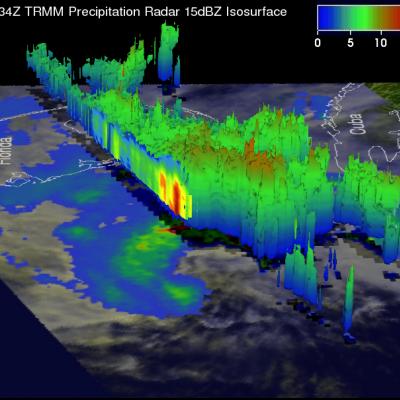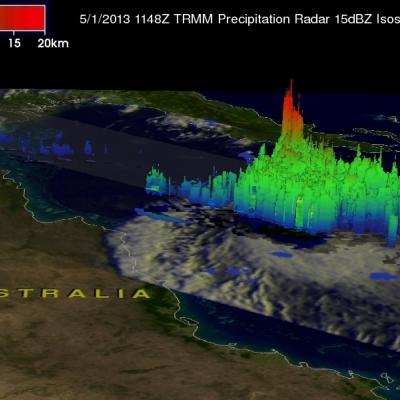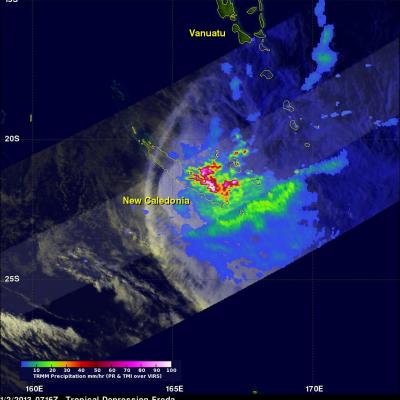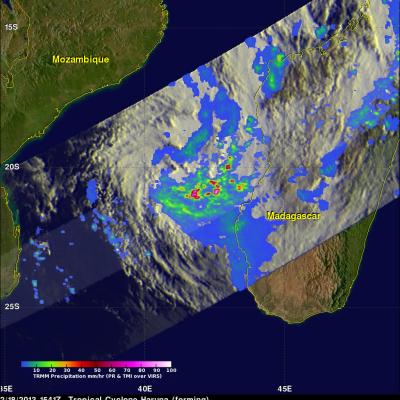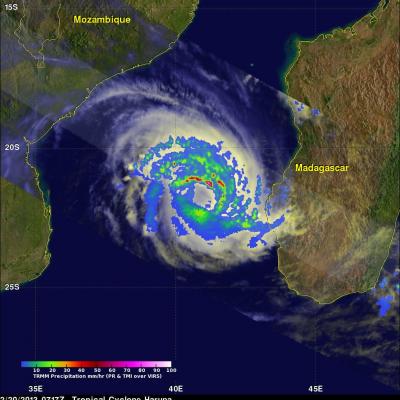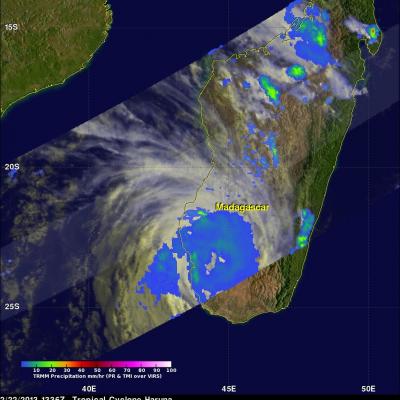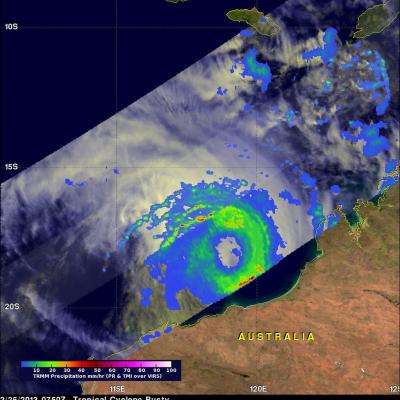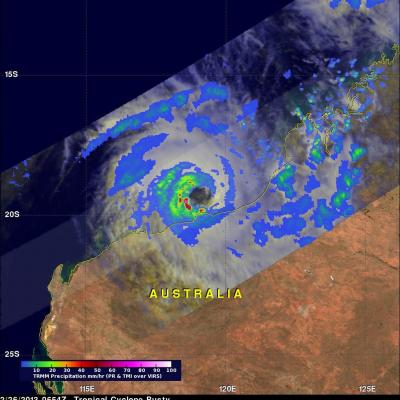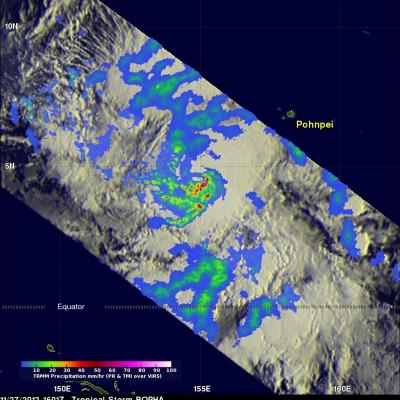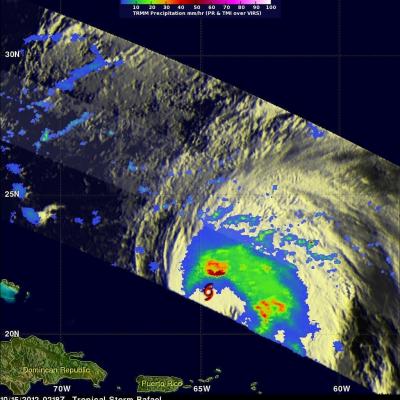TRMM Views Of Tropical Storm Andrea
The TRMM satellite satellite flew directly above tropical storm Andrea on Wednesday June 5, 2013 at 2234 UTC (6:34 PM EDT) and received data used in the image on the left. These data were captured just over an hour after the National Hurricane Center (NHC) named tropical storm Andrea. A rainfall analysis from TRMM's Microwave Imager (TMI) and Precipitation Radar (PR) instruments shows that moderate to heavy rain was wrapping around the eastern side of the storm. The heaviest rainfall of 124.5 mm/hr (~4.9 inches) from TRMM PR data was found on Andrea's southeast side. TRMM had another fairly


